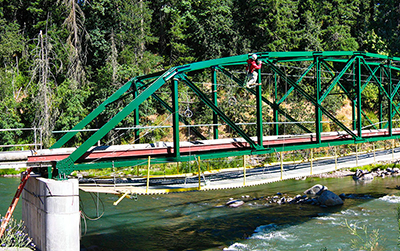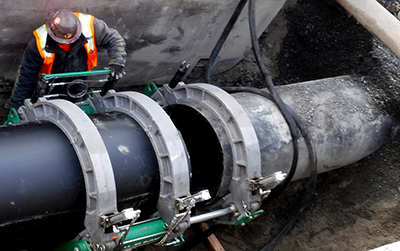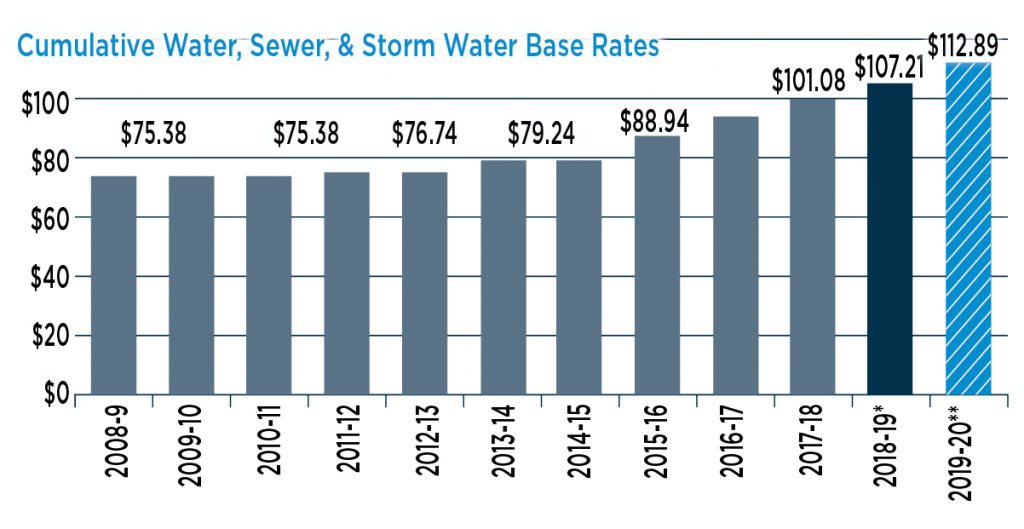Water/Sanitary Sewer capital improvement projects continue
The City of Hood River is making headway on major water/sanitary sewer system capital improvement projects, all identified in the City’s 2013 masterplan to protect and enhance system infrastructure. A five-year utility rate plan was adopted in 2015 to support the needed projects.
A number of local water supply and wastewater systems projects have already been completed and more are planned in the near future.
Recently concluded is the Sherman Street/Serpentine waterline improvement project which replaced the main water lines and pressure reducing valves on 7th Street and 4th Street. “This one was huge—one of our largest in-town water projects,” City Public Works Director Mark Lago relayed. “We realize it impacted residents and traffic, and we are very happy to have it behind us.”

Another recently accomplished mission is the Waste Water Treatment Plant (WWTP) odor control project (see accompanying article). Upcoming WWTP capital improvements include an upgrade of the UV disinfection system, which disinfects effluent with UV radiation as it flows through the UVD channel; digester improvements consisting of cleaning out the digesters, improving the piping and performing structural improvements to the large brick digester building; and upsizing the sewer influent pipe that runs from the bottom of the hill near the Waucoma Building and under I-84 to the WWTP.

Past projects include a 20-mile Water Transmission Line replacement from the City’s pristine groundwater source near Mt. Hood in 2014. The new line is expected to support Hood River’s water supply for the next 75 years, accounting for population growth. A full renovation of the 60-year-old Riverdale Reservoir also occurred that year, now serving as an extra 5 million gallon water source equivalent to 2.5 days of drinking water for City utility customers in the event the main water supply is compromised.

In 2016, the City extended its wastewater outfall of treated effluent to a new confluence zone northwest of the Hook under the waterfront trail. The location moved the outfall further from active currents and more populated recreational areas since the 2006 floods and sandbar formation created a reverse current eddy in the prior outfall location.
The City identifies which infrastructure elements are in critical need of updates or replacement during the budgeting process and schedules improvements accordingly over a multi-year period. As a result of the City’s robust capital improvements plan, local water/sewer base rates have increased approximately $30 dollars per month per household in the last 10 years.
Continuous updates to the City’s water/sanitary sewer systems serve the entire city population so utilities are charged on a shared cost basis, with usage rates applying only beyond base use. The majority of Hood River’s utility costs are dedicated to maintaining and repairing a fixed distribution system to homes and businesses, regardless of the volume that flows to them. Rates are based on delivery pipe diameters, with 90% of the city residents falling under the lowest paying user group.
The City provides a Utility Rate Assistance Program (URAP) to assist low-income families with utility bills. Households with less than 60% of the area median income (AMI) are eligible for 30% off sewer charges and 40% off water charges. The URAP program is administrated by the Mid-Columbia Community Action Council. Contact MCCAC for more information. (MCCAC Facebook Page)

Please consider signing up HERE to receive quarterly Emails of future editions of Hood River City Connect.
Si le gusta lo que acaba de leer, considere inscribirse AQUI para recibir correos electrónicos trimestrales de futuras ediciones de Hood River City Connect.
